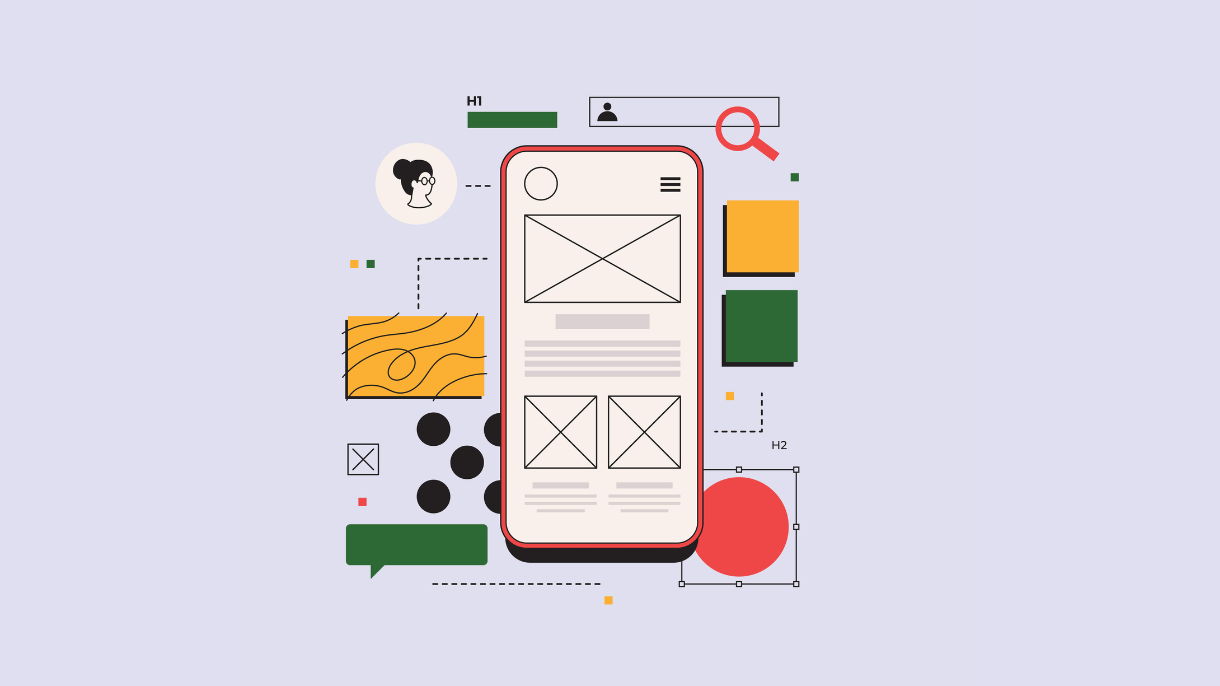

User Experience (UX) and web design are often used interchangeably, but they are actually two distinct disciplines with different goals and approaches.
Understanding the difference between UX and web design is crucial for building effective websites and digital products that meet the needs and expectations of users.
Web Design
First, let’s take a look at web design.
Something we are all familiar with, web design is the process of creating the visual and aesthetic aspects of a website, including layout, colour schemes, typography, and graphic design. The primary goal of web design is to create an attractive and visually appealing website that effectively communicates the intended message to users.
Good web design should focus on the following aspects:
Layout
The layout of a website should be organised, clear, and easy to navigate. A good layout helps users to find the information they are looking for quickly and easily.
Colour
Colour schemes should be chosen based on the message of the website, and they should be consistent with the branding throughout the website. This helps to create a sense of continuity and professionalism.
Typography
The choice of fonts and their sizes is crucial in web design. Good typography enhances the readability of the website and makes the content more appealing to the users.
Graphic Design
The use of graphics, images, and videos should be consistent with the overall design of the website. They should be high quality and used to enhance the content, rather than distract from it.
Responsive Design
With most people choosing to view websites on a mobile device over desktop, websites need to be responsive and optimised for different screen sizes. A good web design should work well on desktops, laptops, tablets and mobile devices.
User Experience (UX) Design
Now, a well-designed website not only looks great but it also creates a positive impression and attracts visitors to the website.
UX design is the process of creating a positive and enjoyable experience for users when they interact with a website or digital product. It includes everything from the layout and functionality of the site to the ease of use and the emotions that the user experiences while interacting with the product.
Good UX design focuses on the following aspects:
User Research
UX design utilises user research to understand the needs, goals, and expectations of the target audience. This research helps to create a product that meets the needs and addresses any pain points of the users. This involves collecting data through surveys, interviews, and observation, and using that data to create user personas and user journeys.
User Interface (UI) Design
The UI design is the visual and interactive part of the product that the user interacts with. The UI design should be simple, clear, and easy to use, with a focus on creating a seamless and intuitive experience.
Information Architecture
The information architecture is the organisation and structure of the content on the website or digital product. It should be easy to navigate, with a clear hierarchy of information that makes it easy for users to find what they are looking for.
Interaction Design
Interaction design is the process of designing the user’s interaction with the product. It includes designing buttons, menus, forms, and other interactive elements that are easy to use and intuitive.
User Testing
UX designers conduct user testing to validate their designs and get feedback from users. This helps them to identify any issues and make improvements to the product.
Overall a good UX design creates a positive and enjoyable experience for users, and it helps them to achieve their goals with ease. It also helps to create a sense of trust and credibility, which can increase user engagement and loyalty.
The Differences between Web Design and UX Design
While web design and UX design share some similarities, they are two distinct disciplines with different goals and approaches. Here are some of the main differences between web design and UX design:
Focus & Goals
Web design focuses on the visual and aesthetic aspects of the website, while UX design focuses on the overall user experience. The goal of web design is to create an attractive website that effectively communicates the intended message to users, whereas the goal of UX design is to create a product that meets the needs and expectations of users, and helps them to achieve their goals with ease.
Process
Web design is often seen as a more linear and sequential process, with a focus on creating an attractive and visually appealing website. UX design, on the other hand, is a more iterative and user-centred process, with a focus on creating a positive and enjoyable experience for users.
Impact
Good web design can create a positive first impression and attract visitors to the website, while good UX design can lead to increased user engagement, loyalty and conversions; as users are more likely to take the desired action, whether it’s making a purchase, filling out a form, or signing up for a newsletter.
Elements
Web design focuses on elements such as layout, colour, typography, and graphic design, while UX design focuses on elements such as user research, user interface design, information architecture, interaction design, and user testing.
Defined audience
Web design focuses on creating a website that appeals to a broad audience, while UX design focuses on creating a product that meets the specific needs and expectations of the target audience. For example, a website aimed at young adults may use a modern and edgy design, while a website aimed at seniors may use a more traditional and conservative design.
The Importance of UX in Web Design
While web design is important in creating an attractive website, UX design plays a crucial role in ensuring that users have a positive experience and are able to easily accomplish their goals.
Accessibility should be a key consideration in both web design and UX design. It’s important to create websites and digital products that are accessible to users with disabilities, including those who are blind, visually impaired, or have motor disabilities. This can be achieved through the use of alt tags for images, proper labelling of form fields, and keyboard accessibility, among other things.
UX design also involves creating a sense of trust and credibility, which can be achieved through clear and consistent messaging, easy-to-use navigation, and high-quality content. A good UX design can also help to differentiate a product from competitors and create a competitive advantage.
User experience and research are just some of our specialities. Get in touch today if you want to find out how to improve the UX on your website to help increase your conversions.
 Shopify Development
Shopify Development  Social Media & Blogs
Social Media & Blogs  PPC
PPC 
